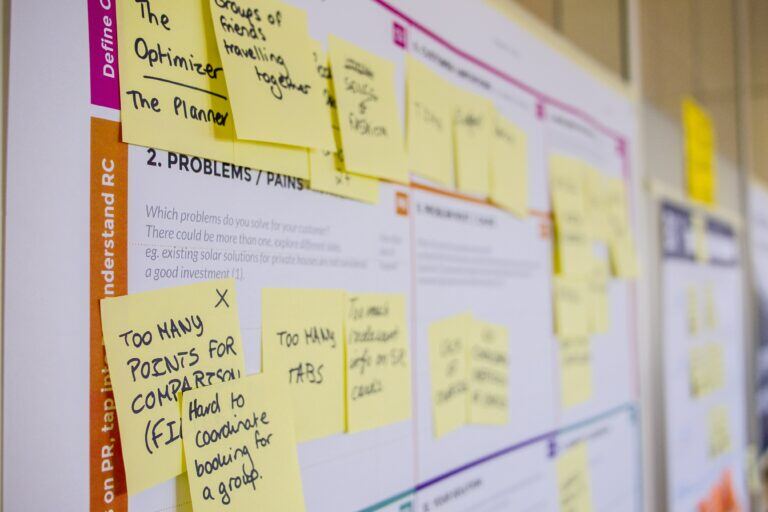Key HR Trend Four: Agile Comes to Manage the Workforce

Hello again, and thanks for tuning into the latest segment of our blog series detailing the key trends for all things HR, talent, and skills for 2023.
In case you missed it, here are the trends we’ve already covered in our three previous segments: Trend #1: HR Leaders Must Develop Recession-Proof Talent Strategies; Trend #2: A New CHRO Mandate Emerges (to Drive Digital Transformation and Evolving Business Mandates); and Trend #3: Talent and Skills Strategies Emerge As Crucial Competitive Advantages.
Continuing our theme of transformation, today’s trend looks at how we work in today’s HR teams and embraces the tech-paradigm Agile.
With uncertainties abounding, many business leaders feel overwhelmed by today’s cacophony of online voices and their conflicting predictions of what lies ahead. So our team of seasoned HR experts compiled this list of vital HR trends to cut through the noise and to give you the insights they need to make the most of today’s choppy waters, chart a safe course, and sail straight into bluer skies.
Trend Four: The Agile Mindset Comes to Help Manage Workforce Ecosystems
Agility is more important than ever in our current business world. Gone are the days when back offices could get away with traditional work models and methods to achieve their business goals. As people leaders, HR must be a proponent of agility and adaptability within their organizations.
The last few years have brought immense changes to work and life as we know it, leaving many workers with a sense of whiplash and a yearning for what used to be. Today we’re diving into why now is such a crucial moment for HR teams to confidently guide their teams through these quickly changing tides – and find purpose in the process.
This should come as no shock, of course, companies that quickly adapt to changing market conditions, customer needs, and internal processes are more likely to succeed. But this is especially true in the HR field, where flexibility and responsiveness make a big difference in attracting and retaining top talent, managing employee development, and driving organizational performance.
But What Does it Really Mean for HR to be “Agile”?
As part of the back office, HR has traditionally leaned toward manual and traditional approaches, making it especially challenging to transform from a reactive organization to one that is agile. That said, this shift is crucial for teams to successfully manage their workforce ecosystem and properly support their diverse crew of team members, including gig workers, remote employees, and contractors, amongst others.
How can HR professionals embrace an agile approach? Here are five principles and practices to consider:
- Embrace a continuous improvement mindset. A famous founding father once said, “when you are finished changing, you are finished.” He was right. Agile organizations are always looking for ways to improve and evolve, and HR should be no exception. Teams must continuously coordinate efforts to gather feedback from employees, analyze internal data, and experiment with new approaches to achieve goals and maximize employee engagement.
- Foster a culture of transparency and collaboration. Agile teams rely on open communication and collaboration to move quickly and effectively. In HR, this looks like sharing information about company goals and strategy, as well as providing regular opportunities for employees to provide input and feedback – to think outside the box without fear of judgment. Teams must also break the barriers of data silos in order to achieve true collaboration and transparency. While it can be a pain to get data organized, it’s truly the foundation for a democratized organization. You need it for your data to flow securely between the necessary teams.
- Build a flexible organizational structure. In an agile HR model, teams are often organized around cross-functional, self-managing units that can respond quickly to changing business needs. This involves flattening hierarchies, empowering employees to take on more responsibility, and leveraging technology to enable remote and flexible work.
- Use agile methodologies in HR processes. Apply agile methodologies, such as Scrum and Lean, to HR processes like performance management, employee development, and talent acquisition. These approaches focus on rapid iteration, ongoing feedback, and continuous improvement. While it may seem daunting at first, don’t be afraid of failure. Proof of concepts are essential to continued growth as an organization.
- Emphasize employee learning and development. In an agile organization, employees are expected to constantly learn and grow. HR should support this by providing opportunities for employees to learn new skills, seek out new challenges, and take on leadership roles.
Back when Heraclitus famously wrote, “there is nothing permanent except change,” we’re pretty sure he wasn’t referring to a historic pandemic uprooting our current work models that had been established for generations. Yet his words feel more apt than ever.
The most successful teams are taking note of rapidly changing business environments and following suit by embracing the latest and greatest tools and strategies to stay competitive. When done correctly, these methods create a positive, engaged, and high-performing workforce.


